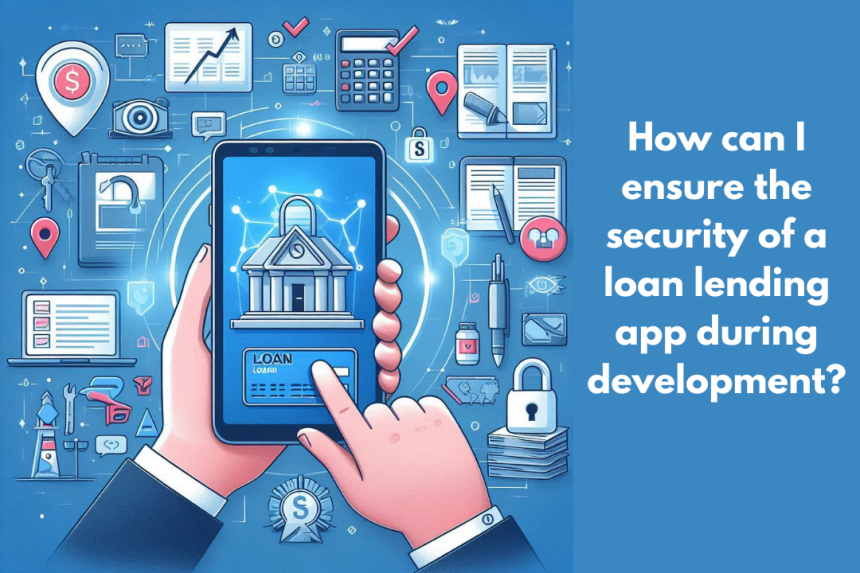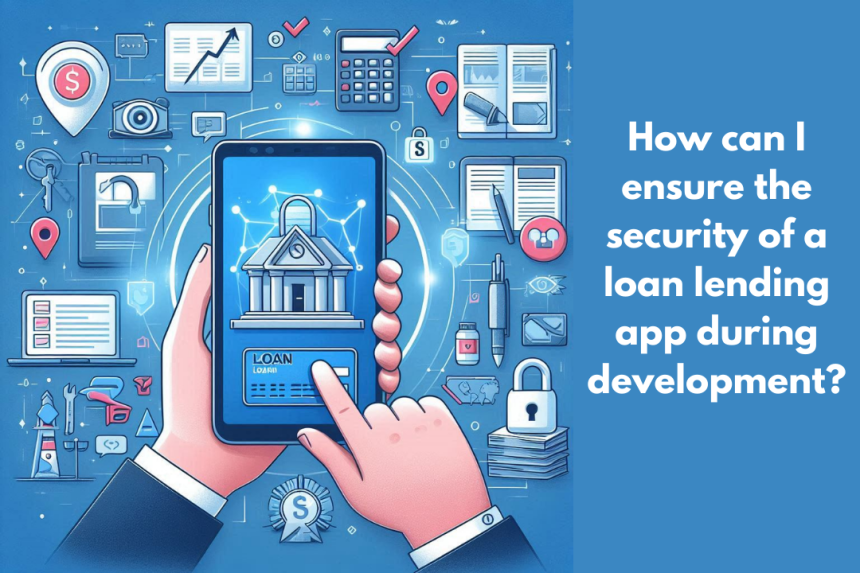
How can I ensure the security of a loan lending app during development?
In the world of fintech, loan lending app development has become increasingly popular, offering users convenient access to loans right from their smartphones. However, with the rise of digital financial services comes the critical need for robust security measures. Ensuring the security of a loan lending app during development is not just a technical requirement; it's a fundamental aspect that builds trust with users and safeguards sensitive data. In this article, we'll explore key strategies and best practices to secure your loan lending app effectively.
Introduction In the world of fintech, loan lending app development has become increasingly popular, offering users convenient access to loans right from their smartphones. However, with the rise of digital financial services comes the critical need for robust security measures. Ensuring the security of a loan lending app during development is not just a technical requirement; it's a fundamental aspect that builds trust with users and safeguards sensitive data. In this article, we'll explore key strategies and best practices to secure your loan lending app effectively. The Importance of Security in Loan Lending App Development When developing a loan lending app, security should be at the forefront of your priorities. The app handles sensitive information, including personal identification details, financial data, and transaction records. Any security breach can lead to significant financial losses, legal issues, and damage to your company's reputation. As the saying goes, "It's better to be safe than sorry," especially in the realm of digital finance. Key Security Measures for Loan Lending Apps 1. Secure Authentication and Authorization One of the first lines of defense in a loan lending app is secure authentication and authorization. Implement multi-factor authentication (MFA) to ensure that only authorized users can access the app. Use strong password policies and consider integrating biometric authentication methods like fingerprint or facial recognition. Example: Use OAuth 2.0 for secure authorization and ensure that users' passwords are stored using strong hashing algorithms like bcrypt. 2. Data Encryption Encrypting sensitive data is crucial to protect it from unauthorized access. Ensure that data is encrypted both in transit and at rest. Use industry-standard encryption protocols like TLS for data transmission and AES for data storage. Example: Encrypt all personal and financial information stored in the app's database to prevent data breaches. 3. Regular Security Audits Conducting regular security audits helps identify potential vulnerabilities in your app. These audits should include code reviews, penetration testing, and vulnerability assessments. By proactively identifying and addressing security flaws, you can prevent them from being exploited by malicious actors. Example: Schedule quarterly security audits and use automated tools like OWASP ZAP for continuous vulnerability scanning. 4. Secure API Integration Loan lending apps often rely on third-party APIs for various functionalities, such as credit scoring and payment processing. It's essential to ensure that these APIs are secure and that data is transmitted safely. Use API gateways and secure tokens to protect API communication. Example: Use JSON Web Tokens (JWT) for secure API communication and validate all API requests and responses. 5. Compliance with Financial Regulations Compliance with financial regulations, such as GDPR and PCI DSS, is mandatory for loan lending apps. These regulations set standards for data protection and security, ensuring that sensitive information is handled responsibly. Example: Implement data anonymization techniques and provide users with the ability to control their data in compliance with GDPR. 6. Real-Time Monitoring and Alerts Implementing real-time monitoring and alerts helps detect and respond to security incidents promptly. Use intrusion detection systems (IDS) and security information and event management (SIEM) solutions to monitor your app's activities and alert you to any suspicious behavior. Example: Set up real-time alerts for unusual login attempts or large data transfers. Common Security Threats and How to Mitigate Them 1. Phishing Attacks Phishing attacks involve tricking users into providing sensitive information through fake websites or emails. Educate users about the dangers of phishing and implement email filtering to prevent phishing emails from reaching them. Mitigation: Use SPF, DKIM, and DMARC to protect against email spoofing. 2. Data Breaches Data breaches can occur when sensitive information is accessed without authorization. Ensure that your app uses strong encryption and access controls to protect data. Mitigation: Regularly update and patch your software to fix security vulnerabilities. 3. Malware and Ransomware Malware and ransomware can infect your app and compromise user data. Use antivirus software and educate users about the risks of downloading untrusted applications. Mitigation: Implement secure coding practices and regularly scan for malware. Frequently Asked Questions (FAQs) Q1: What is the most critical security measure for a loan lending app? While all security measures are important, secure authentication and authorization are crucial as they are the first line of defense against unauthorized access. Q2: How can I protect user data in a loan lending app? Protect user data by encrypting it both in transit and at rest, using strong encryption protocols, and implementing strict access controls. Q3: How often should I conduct security audits for my app? Security audits should be conducted at least quarterly. However, it's advisable to perform them more frequently, especially after significant updates or changes to the app. Q4: What are some common compliance requirements for loan lending apps? Common compliance requirements include GDPR for data protection and PCI DSS for secure payment processing. These regulations ensure the responsible handling of sensitive information. Q5: How can I educate my users about security best practices? Educate users through in-app messages, emails, and guides on your website. Emphasize the importance of strong passwords, avoiding phishing scams, and reporting suspicious activity. Conclusion Ensuring the security of a loan lending app during development is a multifaceted process that requires careful planning and implementation of various security measures. From secure authentication to real-time monitoring, each step plays a vital role in protecting sensitive information and building trust with your users. By prioritizing security, you can create a robust and reliable loan lending app that meets industry standards and user expectations.

How to Build a Pet Care App That Pet Owners Will Love
Learn how to create a user-friendly pet care app that meets the needs of pet owners. This...

Why Every Home Needs Regular Professional Carpet Cleaning
Introduction: Maintaining a clean and wholesome domestic surrounding is a pinnacle of pre...

